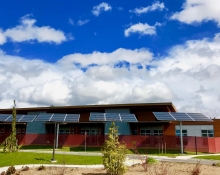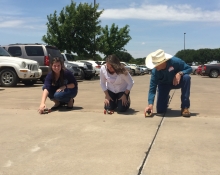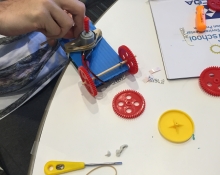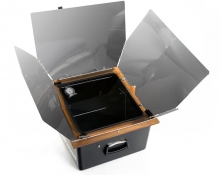Betty J. Taylor Early Learning Academy
In 2015, the Tulalip Tribe opened the doors to the Betty J. Taylor Early Learning Center overlooking scenic Tulalip Bay. This unique, year-round school combines previously dislocated early learning centers including Early Childhood Education and Assistance Program, a day care, Montessori school, and Early Head Start. By partnering with Solar4RSchools, the tribe was able to forward their goals of creating a healthy, sustainable community, which engages student’s natural curiosity, and inspires... Read full project narrative >>







